“Peculiar travel suggestions are dancing lessons from God.” – Kurt Vonnegut A few years ago, I met a girl who had an upcoming trip to …
Colombian Pueblos and An Argument for Unplanned Travel
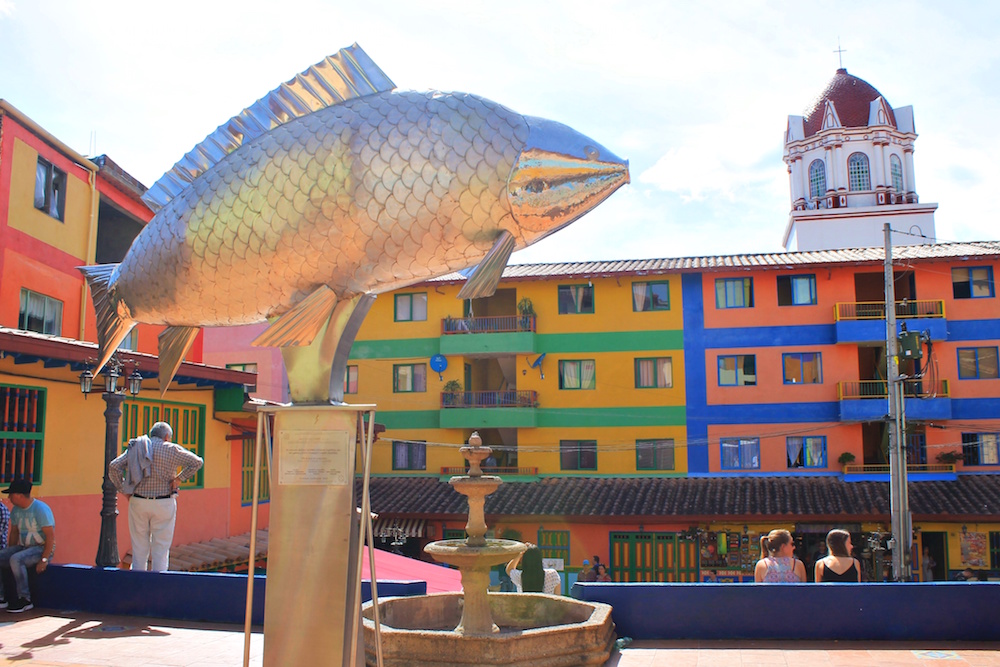
Travel. Workout. Write

“Peculiar travel suggestions are dancing lessons from God.” – Kurt Vonnegut A few years ago, I met a girl who had an upcoming trip to …

Spoiler: Nothing horrible happens to me at the end of this post.
Sunday morning—Palomino, Colombia. Population: 3,900 people.
Palomino consists of a few dirt roads leading to the beach off the main road from Santa Marta. There’s a gas station and a number of hostels; one would not call it a “happening” spot. Besides the beach, there is not much to Palomino. Its allure is in its simplicity. The peaks of the snow-capped Sierra Nevada peak up from the dirt roads and black-sand beaches.

My last full day in Palomino I began preparing for my return to Medellin. The following morning, I would need to catch the first bus from Palomino to Santa Marta, about one and a half hours away, grab the rest of my luggage sitting idly in the storage room of a different hostel, and get to the airport for my flight. I felt confident I could do this but I had one obstacle: I needed 9,000COP ($3.50) for my bus.
In Medellin, almost everywhere takes card and ATMs are located on every corner. Santa Marta had been no different. For Palomino I brought lots of cash but an unplanned trip to the national park ate up a hefty chunk of it in entrance fees. Luckily, my hostel accepted card. The bus, however, did not. I asked the hostel where the nearest ATM could be found. They told me I had to go to Santa Marta or take a mototaxi to the next town, a 30-minute ride for 20,000COP ($8).

I turned my wallet inside out and literally counted every little Colombian coin I had tossed casually in my suitcase or pockets. I found just over 8,000COP. A measly 1,000 pesos short, I regretted the coconut I had ordered at the beach the day before. The hostel, of course, wouldn’t lend me 1,000 COP (Less than $.050). They told me I would have to take a mototaxi to the ATM. Spend 20,000COP for 1,000COP.
Alas, the life of a traveler.
These things happen to me so often I’ve completely gotten over being the least bit upset. I just sighed and decided the ride on back roads through Colombia would be an adventure. Someone from the hostel offered to walk me to the road and asked one of the young guys standing around with motorcycles to take me. Apparently this trip (taking tourists to the ATM, waiting for them, and taking them back to Palomino) is very common.
I got on the back of the motorcycle and we took off down the dirt road. My driver, Luis, was excited to ask me questions. He didn’t speak any English so I decided to mentally itemize the trip expense as a Spanish lesson. The conversation started pretty basic: What is your name? Where are you from? What do you do? How long are you in Colombia? How do you feel about Colombia? How old are you?
Before I go further, “Gwendolyn” or “Gwen” is very difficult for people in Spanish-speaking countries. I’ve started telling people they can just call me “Wendy” which they seem to both enjoy and appreciate. So Luis started calling me Wendy.
We got the money, he stopped on the side of the road for gas (i.e. a kid with a coke bottle of gasoline and a funnel) and began our 30-minute return journey. The following conversation then took place. I will write it in Spanish and give the English translation.
Luis Gets Frisky:
Luis: “Tu eras muy linda” You are very pretty
Me: (realizing exactly where this is about to go and far from excited for it) “Gracias” Thanks
Luis: “Muy muy linda” Very very pretty
Silence
Luis: “Tienes un novio?” Do you have a boyfriend?
Me: “uh…Si. Si si si. Tengo un novio.” Yes! Yes, yes, yes. I have a boyfriend
Luis: “En Estados-Unidos?” In the US?
Me: “En Argentina. Vivi en Argentina antes de Colombia.” In Argentina. I lived in Argentina before Colombia.
Luis: “Tu eras muy linda.” You are very pretty
Me: “Gracias.” Thanks
Luis: “Regalame un beso?” Give me a kiss?
Me: (Very much understanding) “Um….no entiendo.” I don’t understand.
Luis: “Regalame un beso?” Give me a kiss?
Me: (Still understanding just as well) “No. No entiendo.” No, I don’t understand.
Luis: “Beso! Beso! Beso es…” Luis kisses his hand to illustrate. “Entiendes?”
Me: (through a sigh) Entiendo. I understand.
Luis: Regalame un beso?”
Me: No
Luis: No?
Me: No
Luis: Porque no? Why not?
Me: Porque no. Dije tengo un novio. Because no. I said I have a boyfriend.
Luis: awwww, pero tu novio esta muy lejos de aqui. No esta en Colombia. But your boyfriend is far from here. He isn’t in Colombia.
Me: No es appropriado. It’s not appropriate.
Luis: (dramatically disappointed in a slightly joking way) Awwww! Por favor? Please?
Me: No
Luis: Wendddyyyyy!
Silence
Luis: Wennnndyyyy por favor!
Me: No. No quiero. No, I don’t want.
Luis: (Dramatically) bending over on the bike as he is driving as if emotionally crushed. Pero eras muy linda! But you are very pretty.
Me: hay ortas chicas lindas en Palomino, tal vez puede hacer un beso con ellas. There are other pretty girls in Palomino. Maybe you can do a kiss with them.
Luis: Nooo, pero tu eras mas linda! No, but you are the prettiest.
Me: No es verdad. Hay otras chicas sin novios mas lindas que mi. That’s not true. There are other prettier girls without boyfriends.
Luis: No! Un beso.
Me: No.
Luis: Awwwww! Porque no, Wendy? Necesito un razon. Why not, Wendy? I need a reason
Me: Te di un razon. Te di quarto razons! I gave you a reason. I gave you four reasons!
Luis: Porque no? Why not?
Me: Uno, no quiero. Dos: Tengo un novio. Tres: No es appropriado. Quatro: hay otras chicas en Palomino. One, I don’t want. Two, I have a boyfriend. Three, It’s not appropriate. Four, there are other girls in Palomino.
Luis: Awwww
Luis then gasps as we pass a small creek, slows down, and turns the bike around. Only at this moment did I start to get afraid. It was the middle of nowhere and there weren’t even other cars on the road. He does a loop and stops the bike on the side of the road. He points into the creek and says “babilla!”
I had no idea what babilla meant but I looked into the creek and realized that a crocodile was standing very still, nearly blending into the the brown hues of the trees and dirt surrounding it. It was small for a crocodile, maybe my size. I’ve since realized that “babilla” in Spanish doesn’t just mean “crocodile” but a type of crocodile found in Mexico, Central America, and the northern part of South America.
We left, and I told Luis that I thought the crocodile was actually pretty cool. He kept begging for kisses. I kept refusing. He actually started chanting “Wendy!” “Wendy!” “Wendy!” from the front of the bike.
Luis again slowed his bike and pulled to the side of the road. He asked “quieres conducir?” (You want to drive?) I thought I must have misheard but Luis stepped off the bike. I thought about my options and decided if I drove, at least I wouldn’t have to deal with worrying about Luis pulling the bike off to the side of the road. I also figured if I was going to get bothered by this kid for kisses, I might as well get something out of it. So I said sure and took the little bit of control of the situation I could get.
As soon as I started driving I realized he had better access to try to touch me and regretted the decision. Thankfully he didn’t. At one point it looked as if his hand was subtly moving to touch my thigh so I shook the handlebars violently and that put an end to that.
I got home safely, paid him, and spend the rest of the afternoon afraid to leave the hostel since his bike stand was right outside. He had been pestering me to go to the beach or the club with him.
I don’t want to write this as if this is some sort of traumatic experience. Far worse things happen to women everyday. Honestly, it was annoying, but it’s nothing really that new at this point, sadly enough. But this is why girls/women are always complaining about creepy boys/men. It’s not because we just want to complain, it’s because it’s a common experience. If he had asked once and I had said no and that was the end, this wouldn’t be on my blog.
My initial reaction was simply pride that my Spanish was good enough that I could talk that much and that my first time driving a motorcycle went so well. That being said, upon telling this story, a lot of people were really upset. Mostly because they could relate. And it’s true. Too often, “no,” isn’t enough. “No,” needs to be coupled with excuses. Rachel said it well, “you don’t give them what they want so then they ask something else from you— a reason. And then when you give them one, you need to give them another.” They may not force the kiss, but they still force an explanation. My roommate in Medellin was also pretty upset. She said she agrees that keeping the situation light was the safe thing to do, but that it sucks that it had to be that way. Why couldn’t “no quiero” be enough?
And thus, I am once again stuck between the two voices in my head, in the limbo between “asking for it” and being a “bad feminist.”

Bad Feminist:
A little bit of my feministic soul dies every time I make up a boyfriend as an excuse. Why can’t “no” be sufficient on it’s own? I hate myself a little bit for not lecturing him on the importance of accepting a girl’s “no” as a “no.”
I used to be honest and tell people I didn’t have a boyfriend. Why do I need a man for my ‘no’ to gain credibility? I still agree with that sentiment but I’ve started lying. It’s just too exhausting. And honestly, it feels like I’m being stupid. Like if I tell a guy I’m single and he starts harassing me people will say, “Why didn’t you tell him you were taken?” And I’ll say, “I shouldn’t have to.” And they’ll say, “Yeah but now look at the situation you are in…” (see next section)
I admit responding casually to Luis’ persistence. I didn’t yell at him. I didn’t demand to get off the bicycle. I didn’t give an eloquent lecture in Spanish of the importance of respecting women because my language skills are not there. Luis seemed to be having a pleasant time. He was joking around. And I sensed that as long as I didn’t change the tone, he would continue to be harmless. Perhaps if I started shouting, he would dump me on the side of the road. Or worse. I didn’t know. So I pretended like I wasn’t overly fussed. However, if angry liberals on Facebook have taught me anything, it’s that if I’m not fighting and angry for justice and equality in every moment, I’m part of the problem.
Asking For it:
Luis was a young guy from rural Colombia. We were in the middle of no where on a deserted road. I was dependent on him to get home. So I just continued reaffirming my “no” in as many forms I could think. I didn’t yell because a joking man is easier to control than an angry man. And if I had lectured him and he decided to stop the bike and ditch me on the road, I could hear the judgement. “You should have put your safety first.”
Likewise, I didn’t have to talk to him on the ride. When he asked me questions, I supposed I could have pretended to not speak Spanish or told him I didn’t want to talk. Talking to young Colombian men, after all, may mean I’m asking for it, right? In India, everyone made sure I knew this. Talking to strangers is giving off the wrong signal, you may not get sympathy when it goes wrong. But I talked to Luis because I don’t assume every man is going to hit on me. And why have I been paying for Spanish lessons if I don’t practice when I get the opportunity?
As for driving, as soon as I realized I had just opened myself for him to start groping me (which he didn’t) I felt like a total idiot. If he grabbed me, I couldn’t shoo him off without crashing. Definitely people would say I was “asking for it” when I volunteered to drive with him behind me.
And thus, once again, I’m stuck in girl limbo.
Afterthoughts:
Colombia is one of the more interesting places I have lived when it comes to sex, dating, and male-female relations. I’ll have to save this conversation for my next post, but I also feel the need to stress that the situation I described is not a Colombian problem. I’ve had this happened to me in some form in dozens of countries. Honestly, some of the worse harassment I’ve had is in the US and Europe where men feel entitled to grab your butt on the street or in bars and when you don’t giggle and blush they look shocked.
I have no idea if this was the correct way to handle the situation or not. To me, Luis is a 22-year-old kid who has been taught that this is how men act and women just say “no” as “part of the game.” In societies where women are taught they must say no, even when they want to say yes, it puts so much strain on the women who say no because they mean no. Unfortunately, these societies are nearly everywhere.
And so, at the end of the day, I learned that a babilla is not typically a crocodile, but also that ugly scaly animals can take a lot of forms on the way to the bank.
Zoo Rostock: Brillenkaiman (Caiman yacare, früher Caiman crocodilus yacara) |

Last week I left Santa Marta (in northern Colombia) in order to complete a four-day trek through the Sierra Nevada to the Lost City (Ciudad Perdida in Spanish). The fun part of the trek (or the problem if you don’t like trekking), is that the city is located 23 kilometers in the thick of the jungle (around 46 kilometers walking round trip). At first, I wasn’t sure how I felt about doing the trek since the Colombian government requires all trekkers to go with a guide and a group (some people got kidnapped back in 2003, you can watch the documentary on Banged Up Abroad). Typically, I don’t enjoy group treks because I want to go at my own pace. However, the tour ended up being really fun and I really loved my group.
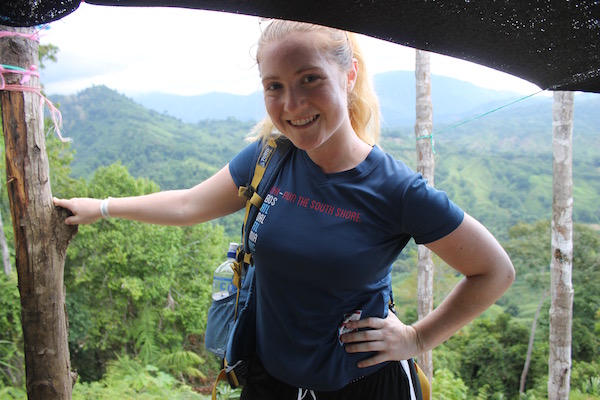
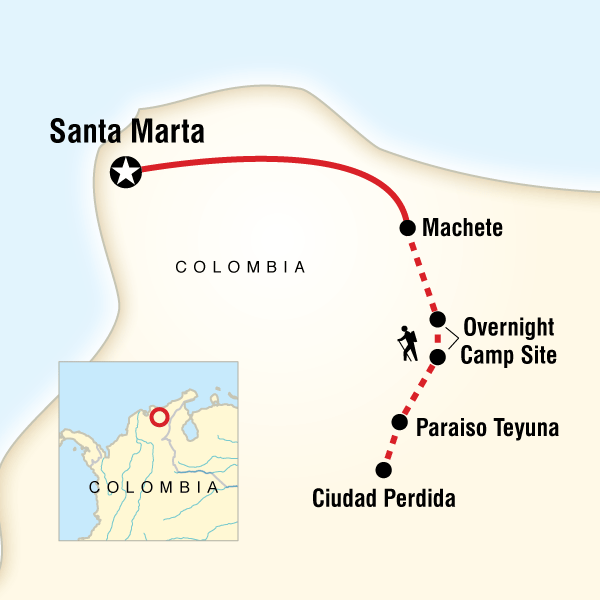
Physical Ability and Rough Terrain
I mentioned in my last post that I’ve been working out a lot and so I wasn’t too worried about the trek. Plus, I figured it couldn’t be more arduous than Everest Base Camp which I completed last September. The altitude is not high, and some girls I met told me the worst parts are just the humidity, the rain, and the mosquitos. They told me to prepare to be wet constantly. I packed a lot of extra clothes in plastic bags.
In my opinion, the trek was a perfect level of what I wanted. It wasn’t so hard that I got left behind, nor was it so easy I was bored. It felt adventurous, despite there being so many people on the trail. And because I could go at my own pace, I really pushed myself. I’m extremely competitive, so I ignored the first piece of advice given by our guide: “It’s not a race, don’t feel you have to rush.” I typically tried to see how fast I could push myself and how many other trekkers from other groups I could pass.

There were a few difficult parts going straight up which just involved cardiovascular determination and honestly weren’t as hard as the parts going straight down and covered with mud (el barro). I definitely slipped and fell on my butt the first day. My pinkie finger is still having difficulty bending, hurts if I apply pressure, and the knuckle is still swollen. A medical student said he didn’t think it was broken but I’m getting suspicious.
One of my favorite parts of the trek was the area near our camp the second night. Since we literally just turned around after the Lost City, I got to do this part twice. It was lots of little hills in the forest, a river crossing, and a narrow path along the river where, at one point, I literally had to climb up a vertical rock with my hands and knees. Crossing the river, I decided to leave my shoes on (they were already wet from the rain and I figured it would be easier than balancing on sharp rocks barefoot against a strong current).
On the way back, we found this little sketchy metal box with a rope to cross the river. You jumped in the box, and someone on the other side pulled you across. Super fun!

My shoes were constantly wet and by the last day I was a little worried I was going to get trench foot again or that the soles were going to peel off the shoes completely and I wouldn’t be able to walk. Luckily, neither happened, though my feet were very saturated and my shoes did this by the last day:

The Lost City
(*Please note that most of this information I received in Spanish from my guide so it may be incorrect. I tried to double check but Google has very little information on the subject)
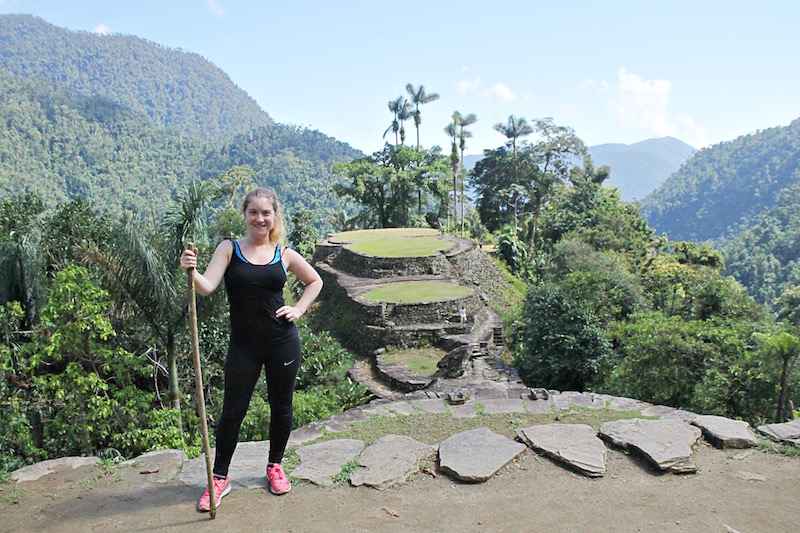
It is believed that the city was built around the year 800 CE, centuries before Machu Picchu. Archaeologists have found housing foundations over burial sites. People of importance were buried in the city in the fetal position with a rope tied around their waist in order to signify the return to the earth from which we are born.
In order to reach the city, we woke up at 5am, had breakfast, and started trekking. After about 30 minutes, we had to cross the deepest river of the trek. The water came past my waist and the current was very strong. Two guides had a rope to help people walk. I simply traversed the river in my shoes and clothes. However, I will never forget standing on the banks watching semi-nude people clinging to their clothes and shoes and the rope in their undies.
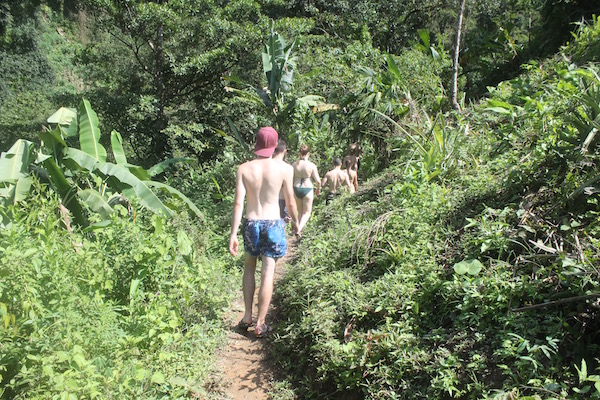
You then need to walk straight up 1,200 stone steps, worn from the passage of time into slick and small bumps.
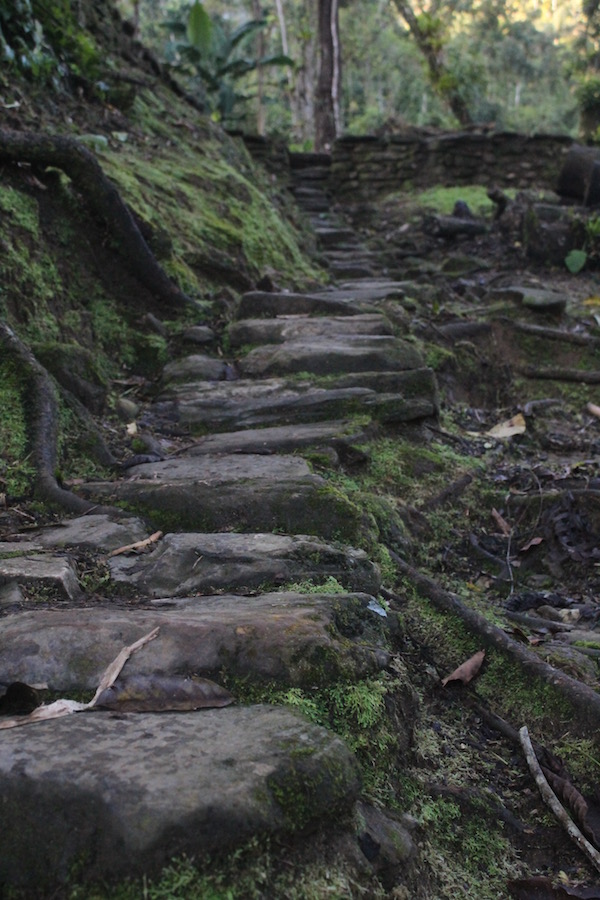
The site was abandoned during the Spanish “discovery” of South America. The natives traded their gold religious items with the Spanish conquistadors. Shortly after, disease began wiping the people out, as happened everywhere in “the new world.” Exposed to new bacteria and viruses, such a small pox, the natives had no immune defense. I believe our guide said 80% of the natives were killed.
Convinced that the Gods were punishing them for giving away their gold relics, the survivors abandoned the site and fled higher into the mountains. It is believed these natives are the ancestors of some of the remaining indigenous tribes in the Sierra Nevada, some of whom claim they had been visiting the site long before its rediscovery by local treasure hunters in 1972. Four indigenous tribes still live in the region. I wanted to write about them but this post is already double-length so I’ll simply provide a link for you to read about the Kogi people and the Arhuaco people.

Sleeping in Nature
Every night we went to bed around 8pm and woke up at 5am. I was under the impression I would be sleeping in hammocks every night but we actually got beds! The bunk beds had mosquito netting around them which seemed to do the job. However, that just left the mosquitos hungry for the morning.
The very first night there was a tarantula on the mosquito netting. (Spider: araña). I’m not sure I have ever seen a spider this big. I didn’t take a photo due to the lighting, but it was pretty impressive. Luckily, thanks to my mom, I’m not very afraid of spiders, though I didn’t really want to touch it and find out if it could bite. The guide brushed it off my bed and onto the floor.
That night I had trouble getting to sleep, not because of the sounds of nature coming from the river, but because my bed faced the TV that the family running the camp had set up. They were watching Titanic in Spanish. First, I watched some of it with them, but then I wanted to sleep. It’s really hard sleeping with people dying and screaming. Honestly, rewatch Titanic. People are screaming for ages. They take so long to finally die.
The morning of the third day, while we were packing our bags before going to the Lost City, I checked under my bed to make sure I didn’t leave anything and there were two hens under my bed! They were just hanging out down there. I told the Spanish people “pollo” and they laughed and taught me the Spanish word for hen (gallina). I told the Austrians and apparently one of them had an egg in his bed.
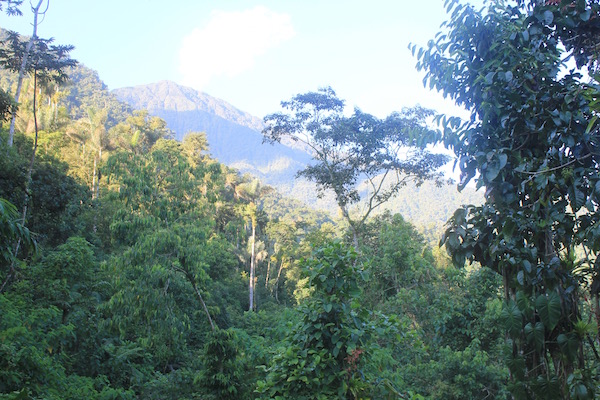
The Trek
I highly recommend doing this trek if you are in Colombia. It’s a great adventure and I learned a bit about the indigenous cultures and Colombian history. Plus, since the entire thing was in Spanish, I got to practice my listening skills a bit.
At the end of the trek, back at the restaurant where we started, one of the French trekkers asked us all what our favorite part of the trek was.
Mine probably wasn’t seeing the Lost City, but rather the end of the third day. It was one of the longest days, and I had pushed myself extra hard. My feet were raw from trekking in wet shoes, I was exhausted, and I finished half an hour before most of the group. The Austrian guy and I walked down to a river we had passed. Honestly, intense exercise is a bit like a drug. I relished in my endorphin rushes at the end of every day. I got in the cold water in my leggings and sports bra and laid on a rock in the river under this tree and watched the rain fall off the leaves and felt 100% relaxed in that moment. I know it’s really cheesy, but it’s own of those moments etched into my brain and labeled: “Pure happiness.”
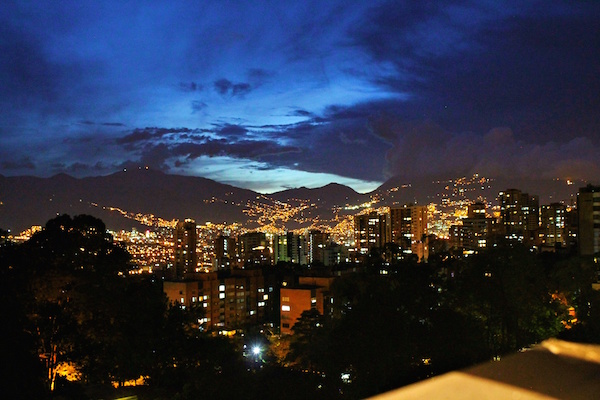
I have to say that I may be the happiest I have ever been. Perhaps it’s the fact that I am currently living in the city of eternal spring and the weather hovers around a solid 75F everyday. Perhaps it’s because I spend the majority of everyday working on things I find fulfilling and important (writing, exercise, and language). Or maybe it’s just the view from my apartment.


El Poblado is definitely an ex-pat bubble. This has been both good and bad— good because I can easily grab a salad, I can go to an English-speaking gym, and there are loads of opportunities for Spanish classes. Bad because, well, it’s a lot harder to slip into Colombian culture when you are living in a miniature United States.
Tomorrow I am flying to Santa Marta for two weeks but before I go, I just want to share parts of why I am feeling so happy in Medellin recently:


I am also planning to write an entire blog post just on learning a language, but I’m pretty excited about where my Spanish is now (it’s a solid “meh” status) as compared to where it was when I first landed in Argentina (I could say ‘pollo’ and ‘hola’).
Finding a good language teacher can be difficult. It took me three weeks in Medellin before I found a teacher that was a good “fit.” Now I almost don’t want to leave Colombia just because I like my Spanish teacher so much.

In Argentina, I had a thriving social life but I wasn’t taking care of myself. I’m excited to go back, but I’m happy to have sort of taken a bit of a “break” and gotten myself in order so I can better withstand the social pressure to eat badly and drink a lot.
Plus, it’s giving me the time to catch up with some of my old friends in the US, India, and Argentina.
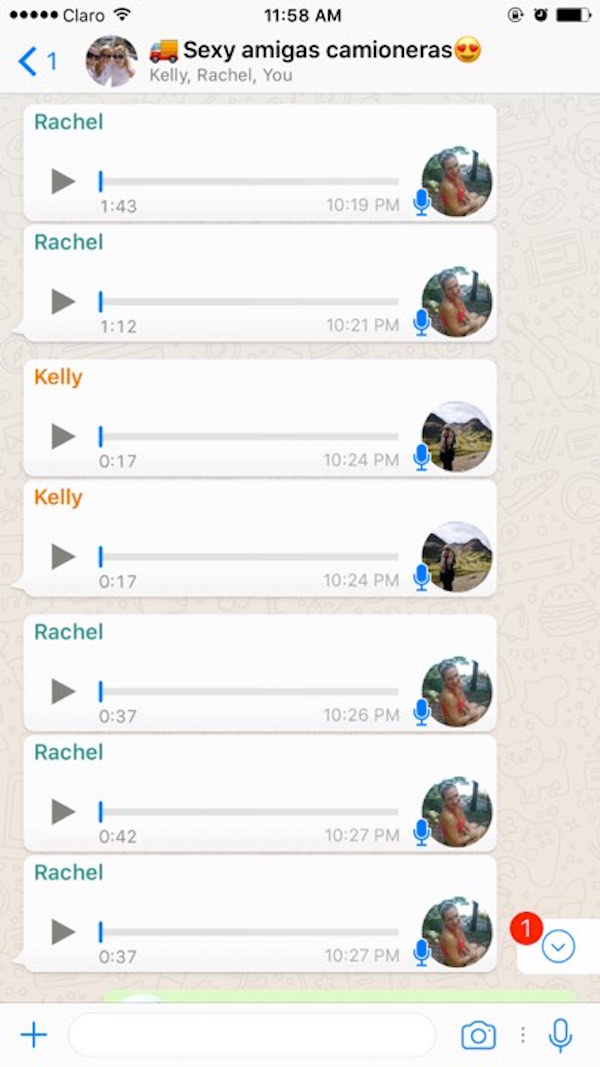



5. Work: I have an amazing routine which involves me waking up at 7am, getting ready, arriving at my café at 8:30am, ordering the exact same thing every morning and working.

Like I said, this neighborhood is an expat bubble. While I don’t love all the English, it is nice that café culture is thriving here. Everyone jams inside with a laptop and is living up the “digital nomad” lifestyle. I get a ridiculous amount of work done in the café from 8:30-12:00/1 everyday.
6. Festivals: Colombians are great at partying. The next two weeks are Feria de las Flores, the festival of the flowers. This involves parades, flower vendors, free concerts, and traditional food/crafts being sold in parks. I’m sad I will miss so many of the events, but I’ve been working every weekend for a month and a half to justify going on vacation.
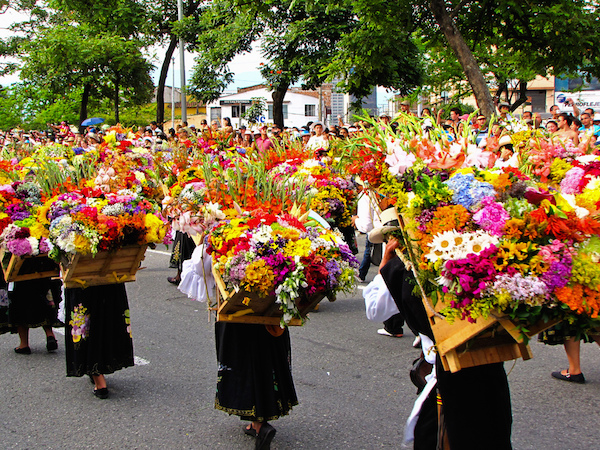
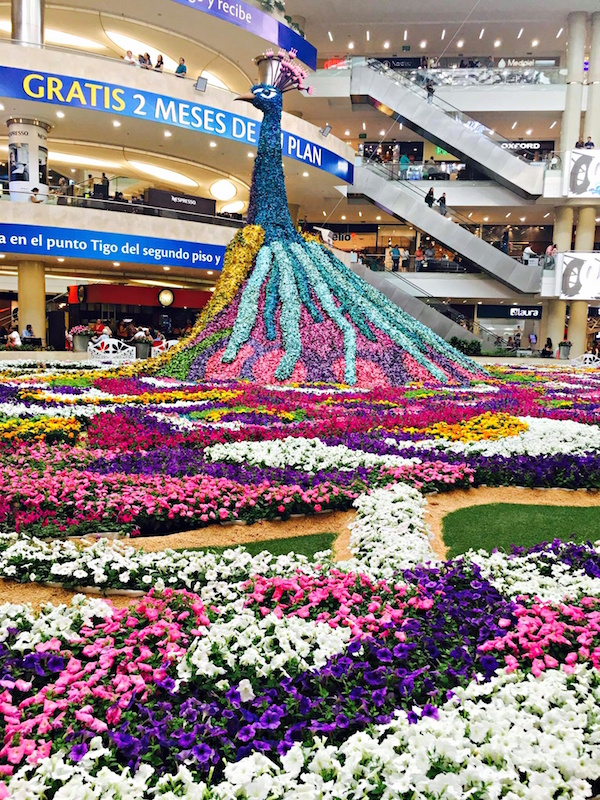
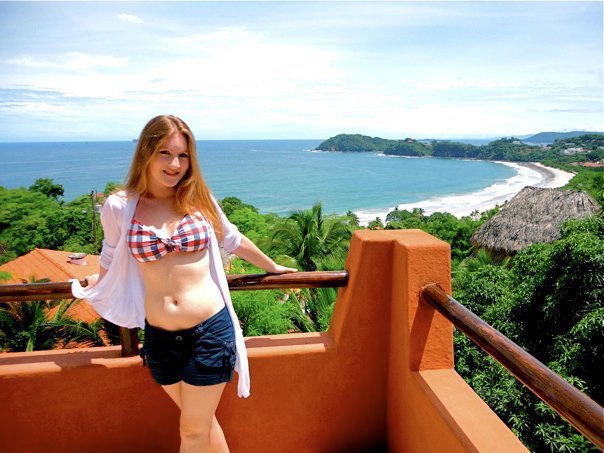
This year makes the 8th year in a row I’ve been out of the United States for the 4th of July.
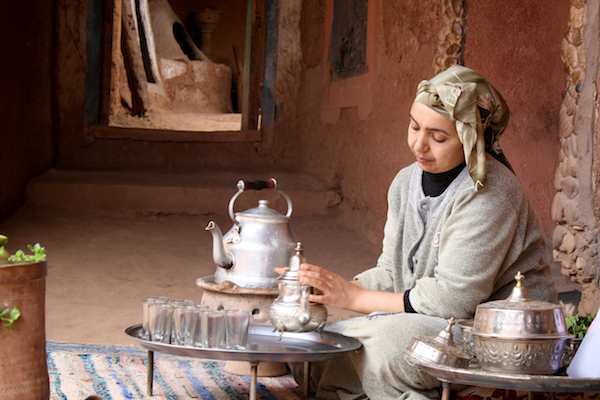
Recently I’ve been feeling a bit nostalgic for my Middle Eastern adventures, learning Arabic, and gorging on Ramadan sweets. I stumbled across all these old photos from Morocco and decided that’s where we should start.
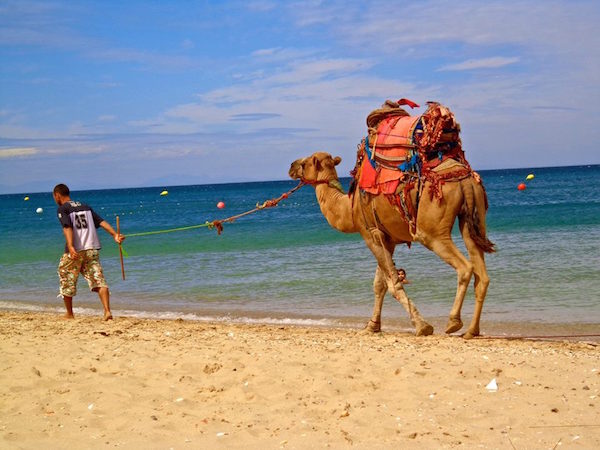
First, for those who don’t know, Ramadan is a month of fasting. Muslims do not eat, drink, or smoke between sunrise and sunset. Obviously, there are many variables and exceptions which I’m not going to get into.
If you are not Muslim, no one expects you to participate. Of course, different countries have different rules. In the UAE, for example, you can get a ticket for drinking water in public even as a foreigner. Whereas in Lebanon, tons of people smoke and drink on the street all day long.
I’ve traveled to Morocco twice. In 2010, a mere 20-year-old, I arrived with no idea what Ramadan was and little knowledge of the Middle East (or the world).
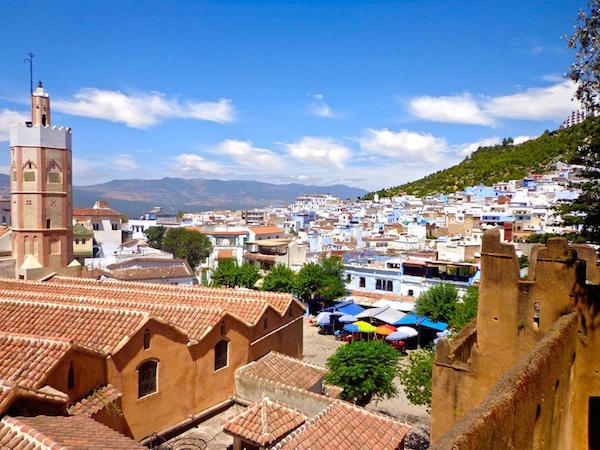
The first time I heard the zowaka (the early morning city alert that fasting was beginning again for the day), I sat straight up in bed thinking there was an air strike.

It was the first time I ever experienced culture shock. I’m glad I did though, because I’ve managed myself quite well in a host of countries since.

I returned to Morocco in July 2013 for a one-month Arabic course. I stayed with a Berber woman in Tetouan and her family. She didn’t speak any English or French so we essentially became pro pantomimes in this month.
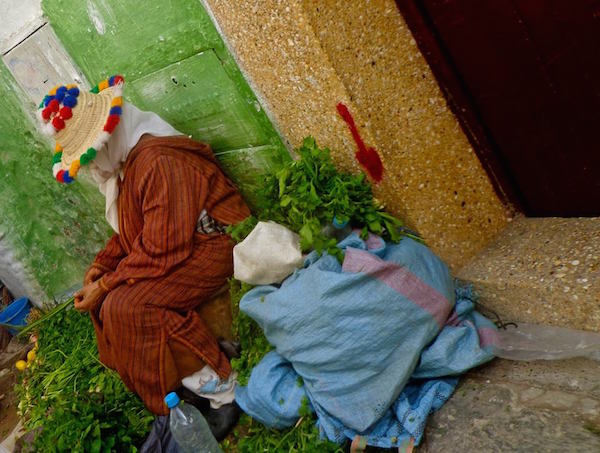
The family was incredibly good to me. I cringe thinking about how little clothing I walked around in. It was hot. I was 23. I was whole-heartedly feminist despite the cultural consequences. And I saw no problem with what I was wearing.
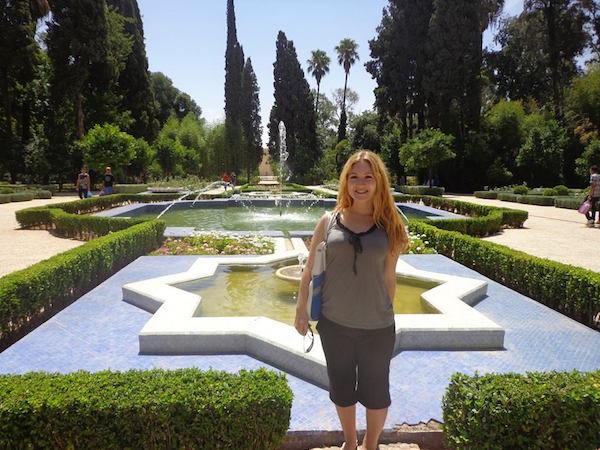
I see the problem now. There’s pushing the limits and then there is just blatantly ignoring them. Part of traveling is realizing when you make a travel “oops” and try to never do it again.
The family never said anything. Even when I paraded down the hall in the middle of the night in shorty shorts and a tank top to use the bathroom (cringe).
They still invited me every evening for Iftar (the first meal of the day after sunset). In Morocco, this means lots of dates and harira, a lentil and tomato soup.


For some, fasting means waking up early, going to work or school, and carrying on the entire day as normal (without food or drink). Of course, there are others who try to sleep the day away.
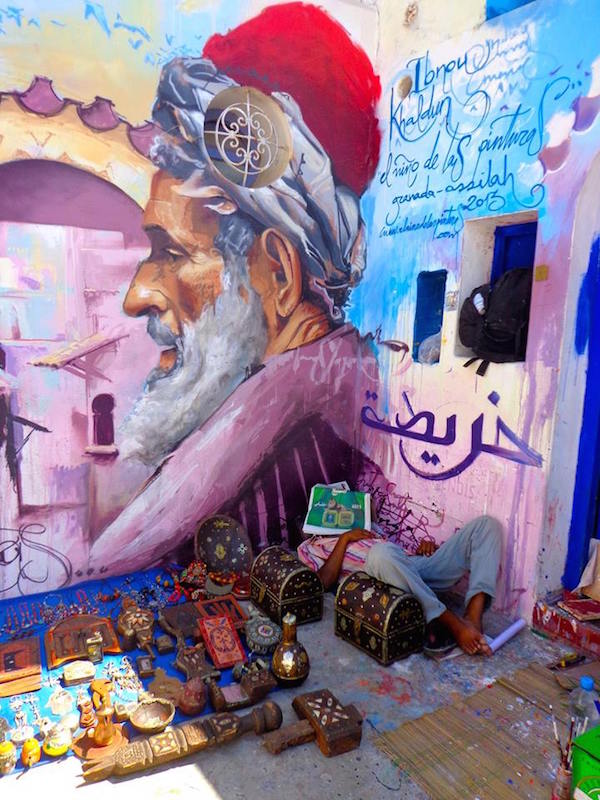
The best part of Ramadan is how alive everything becomes at night. From sundown until sunup everyone is gathering on the street, having a mint tea, eating, and enjoying themselves. It’s really like a month-long party.
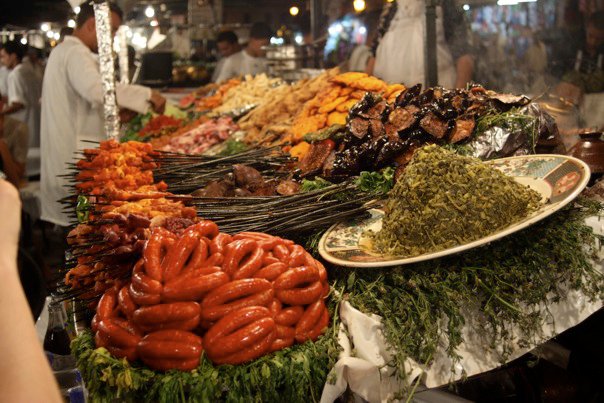
So here’s to all my friends celebrating Ramadan and to everyone else who indulged in my bout of nostalgia. I’m definitely feeling the “itch” to get back to the Middle East. Maybe next Ramadan.
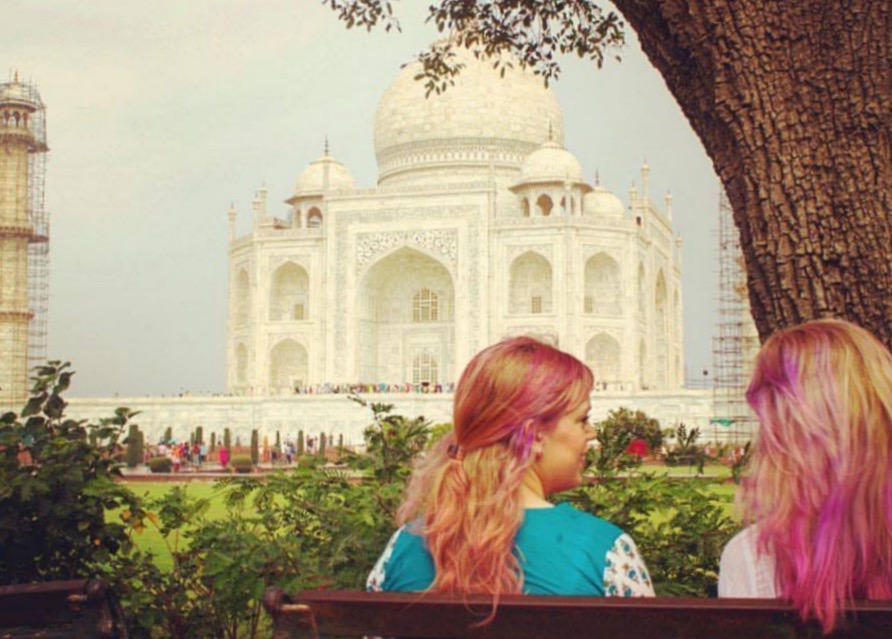
After leaving India, I’ve been able to weigh the aspects of the sub-continent that I’ll miss most as well as the little things that I felt were holding me back.
(more…)
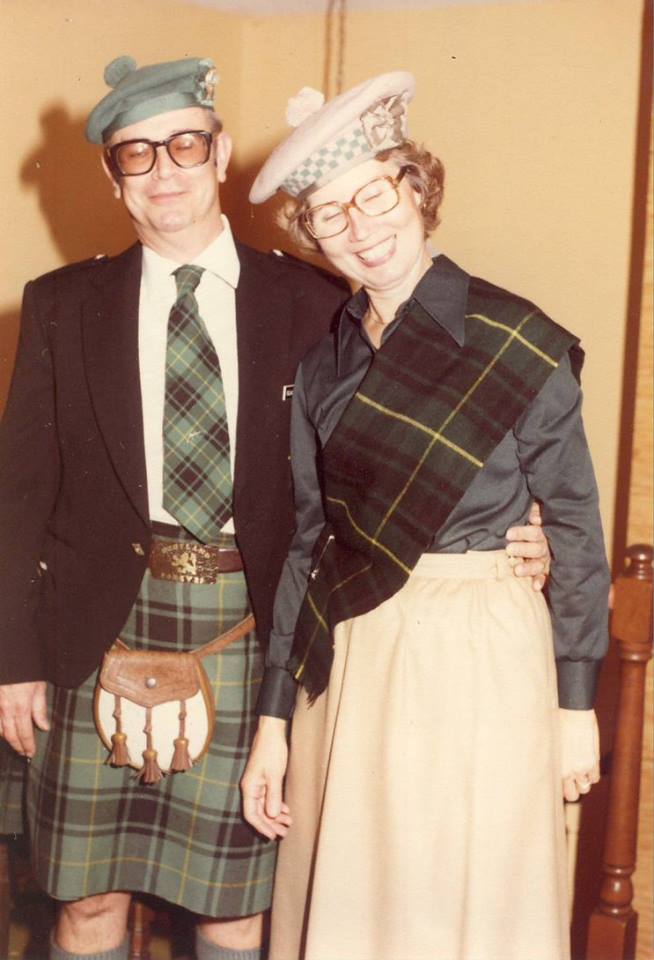
It’s with a heavy heart that I write this, as my grandfather died yesterday and this weekend my family will say goodbye at a memorial service and burial. He died of pneumonia at UNC Hospital today at the age of 90. Despite our sadness, I can’t think of a better example of a person who deserves to have their life celebrated. He accomplished so much, and yet I never think of him in terms of his accomplishments, only in terms of his flawless sense of humor, cheerful attitude, and killer charisma. Well into his late 80s, he still spoke and joked with such a childish charm. Even when talking about the war, he found a way to focus on the positive and the funny instead of the violence and sadness.
My grandfather joined the war when he was 17. All I did at 17 was apply for college and drive my little blue Mazda around Hillsborough while gossiping with Rachel and Kelly about boys. But there he went, off to join the American troops as a radio operator in the First Cavalry Division, island hopping in the Pacific, always at a close proximity to the legendary General MacArthur.
I grew up hearing these stories from time to time. He’d share a short one over lunch one day, another while driving in the car the next. After he was hospitalized in 2014, I decided to sit down with him for a few hours and record his tales so my family could remember not only his stories, but the charismatic way in which he told them.
I’ve added them below, edited into chapters ranging from 3 minutes to 16 minutes in length. It’s neither my best video footage, audio, or editing, but I believe he makes up in content what I lack in technical and artistic skills:
Chapter One: My grandfather convinces his father to let him join the US in their WWII involvement. He is selected as a radio operator for the First Cavalry Division and trains at Fort Riley, Kansas. Some highlights include him learning how to clean his horse, and shipping out from California on a ship reported sunk.
Chapter Two: My grandfather starts in New Guinea, before moving to the Admiralty Islands, and then invading the Island of Leyte. Some of my favorite highlights include him stealing a gun and riding a sea turtle.
Chapter Three: My grandfather faints on Leyte and wakes up in Manila
Chapter Four: My grandfather takes part in the occupation in Japan. He talks about practicing English with the locals and his uncomfortable patrols of the island.
Other: Additionally, throughout our conversations, my grandfather spoke some about horses in various battles. As these thoughts came to him randomly and out of chronologically order, I added them together as a bit of an afterthought.
I also took the liberty of asking him about his father, a WWI veteran. While I never met my great-grandfather, and though the video is quite short, I thought I could gather some new information on my family history.
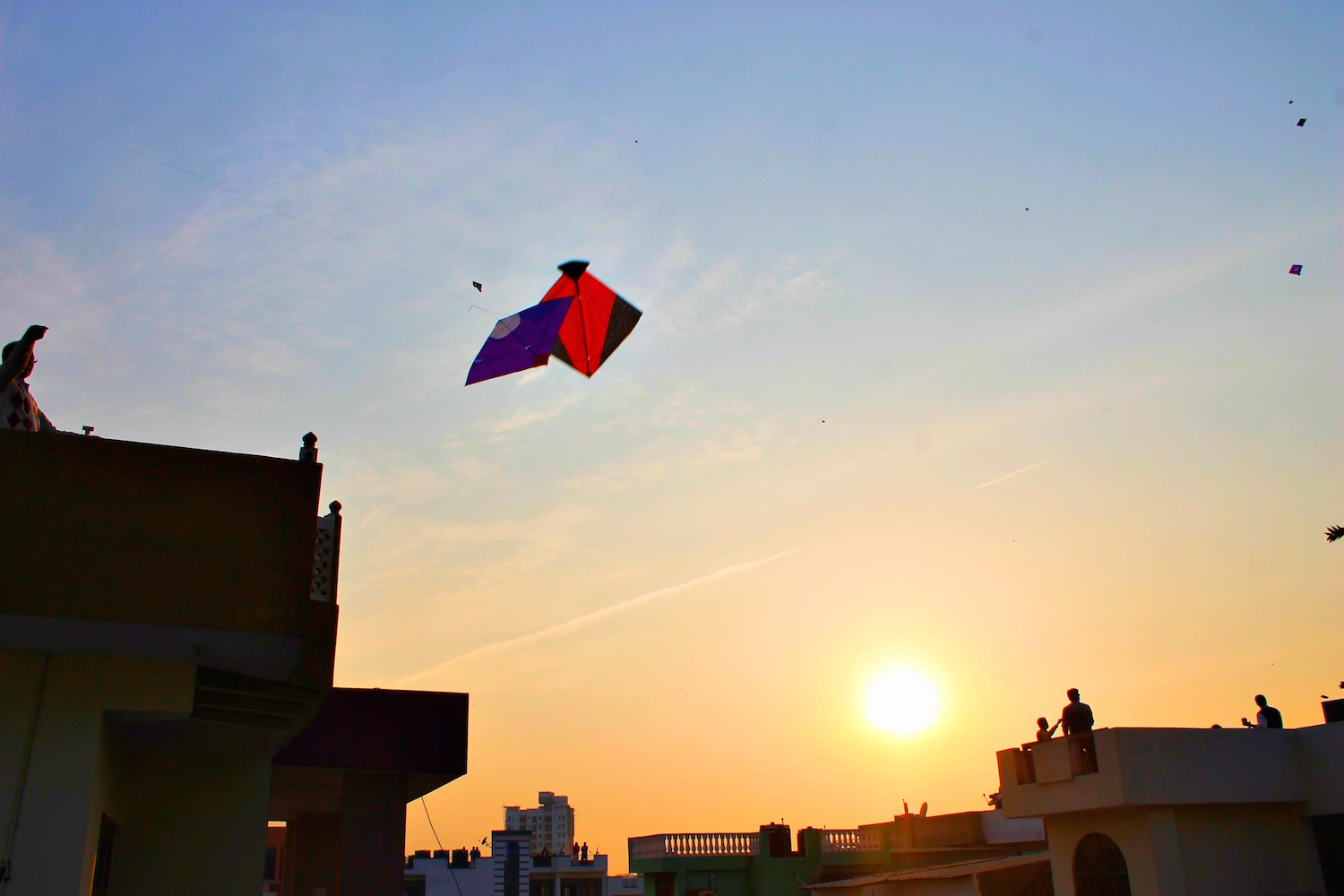
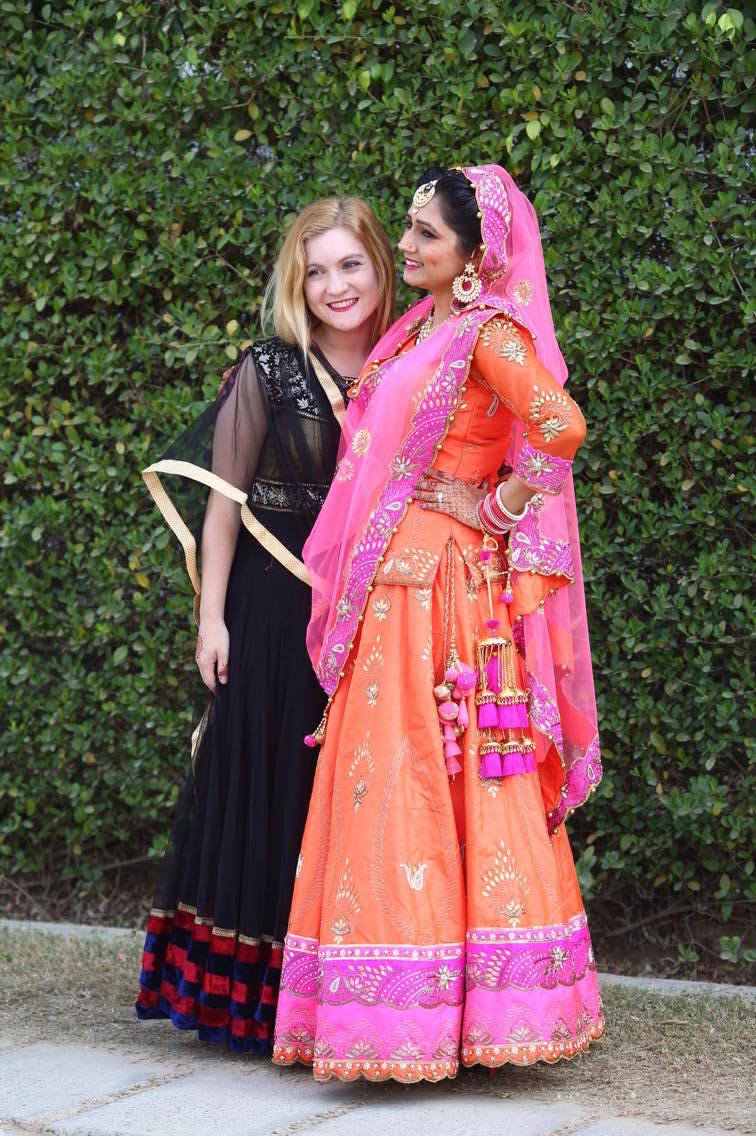
I met Happie over the summer quite accidentally. A group of Americans plopped down in the middle of my “not so foreigner filled” city (Chandigarh, for anyone not paying attention) for an intensive Punjabi language course. Most of these were college students on scholarship. They only stayed 8 weeks. At the end of their course, I hosted a girl, Morgan, since her sponsored housing had run out. It was through her that I met Happie, the Punjabi language teacher of the course. She was just as her name might imply- happy, cute, and fun.
So in late November, I woke up early in the morning and caught a 6am bus to Faridkot, a town in Punjabi near the Pakistani boarder. If you haven’t heard of it, no worries, I couldn’t even pronounce it correctly when I got to the bus station. Four hours later, Happie’s brother picked me up and drove me to her house, a two-story farmhouse. I met some of Happie’s friends from college, friends from Faridkot, and her family. Then the craziness of all the activities began.
Day 1:
Morning: Happie showed me some of her engagement photos with her future husband (they both looked really beautiful, like Bollywood stars or something). She said she had deferred taking more photos until after the wedding because she didn’t feel comfortable with him yet. It was interesting to me how completely calm she was. She had only met him once before (he lives in Canada; she’d been skyping with him for almost a year) but only once very calmly said, “I’m a bit nervous. I don’t really know him.” This seemed to fall in stark contrast to my American friend who recently married her boyfriend of four years (whom she lives with) and was a wreck of nerves before her wedding.
Afternoon: Mehndi (henna) session on Happie’s patio consisting of Happie’s friend and two other girls doing everyone’s mehndi while we drank chai and chatted. Since I had broken my arm three days prior, I only got mehndi on one hand. Happie, as the bride, had incredibly elaborate designs. Her friend produced some eeriously impressive artwork on both her hands and feet. I was sort of jealous of how ornate her mehndi was that I briefly contemplated marrying some random Punjabi man just so he could get a green card and I could have pretty mehndi on my wedding day.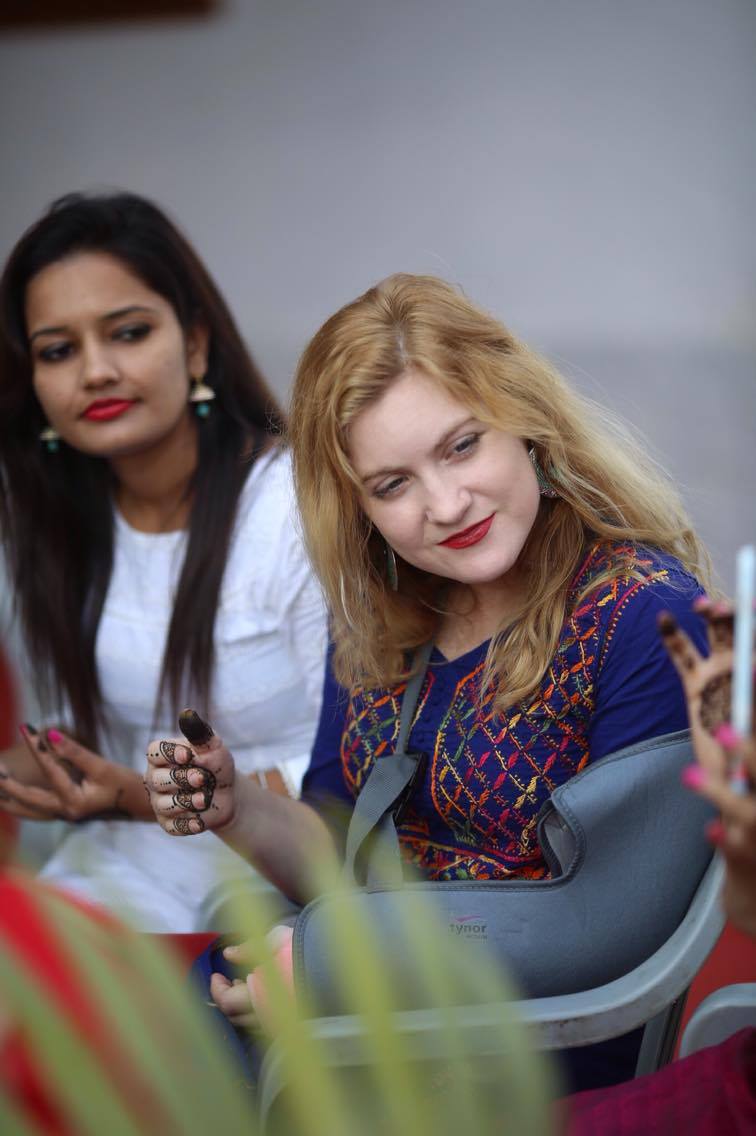
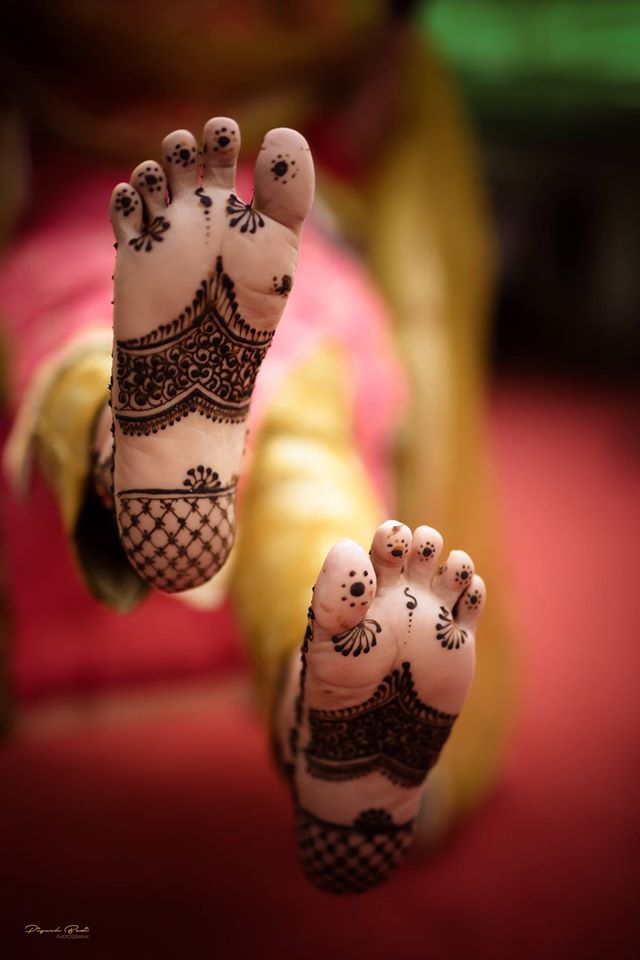
Ultimately, I decided a lifetime of marriage wasn’t worth a day of pretty hands and feet. But the mehndi session was quite fun.
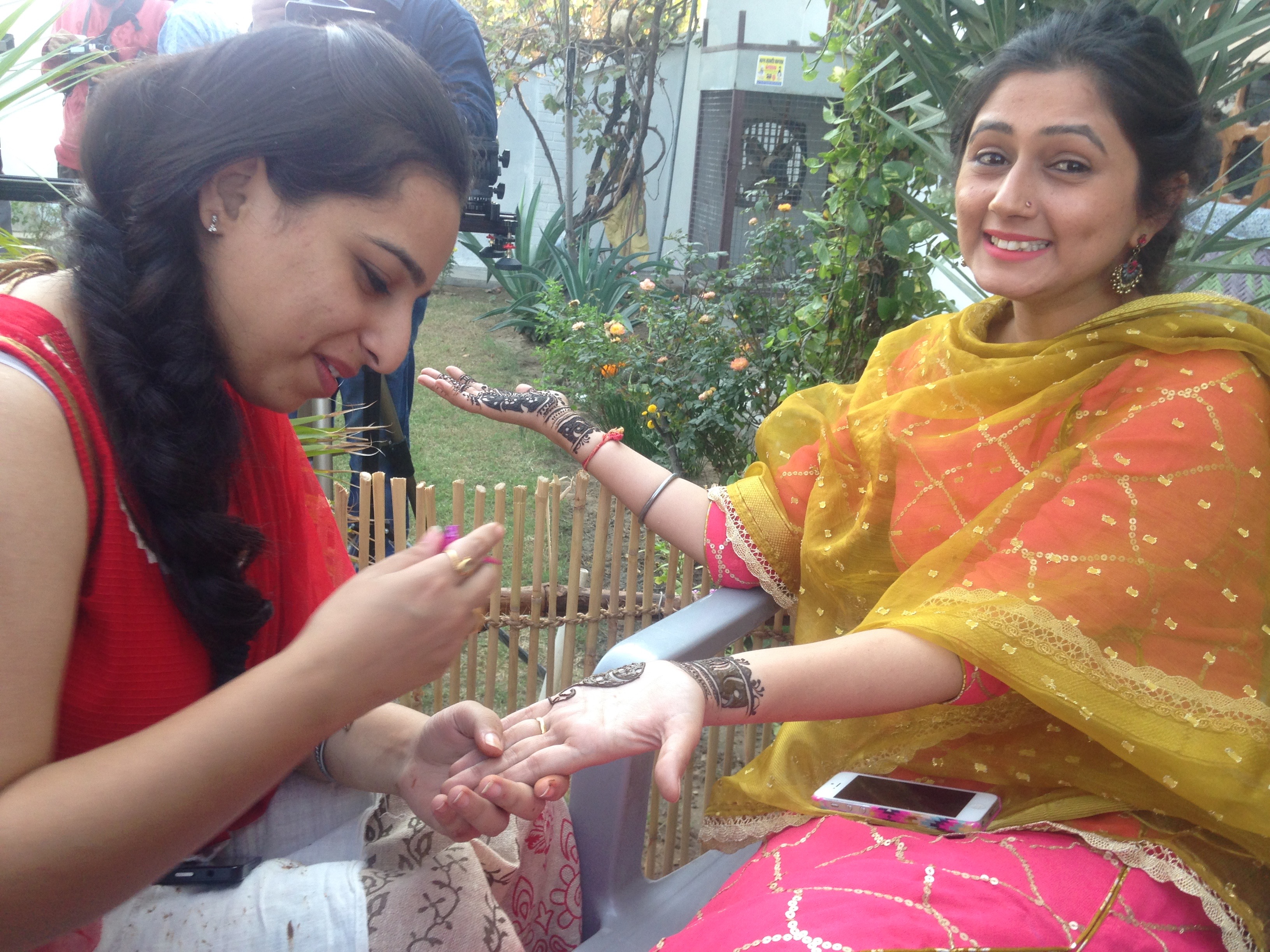
Early Evening: The photographer took photos of all the girls out in the field.
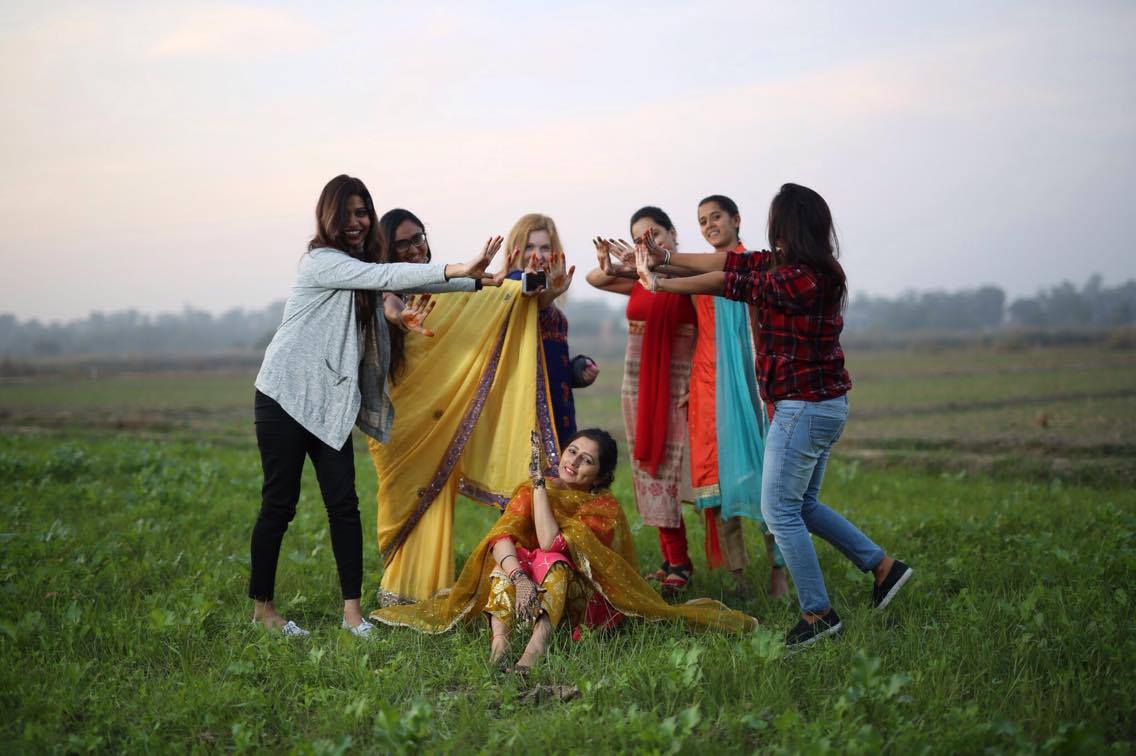
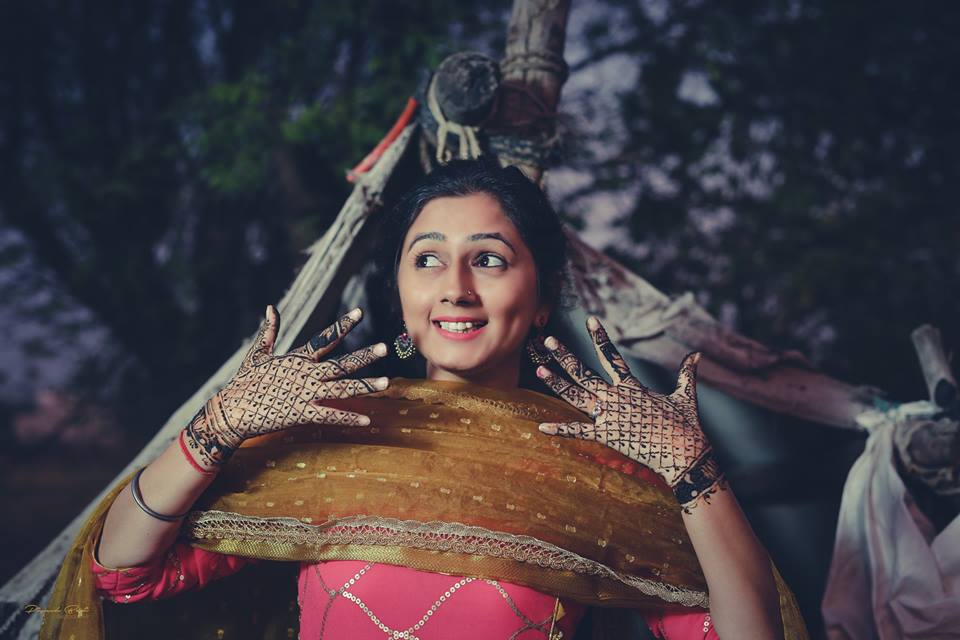
Some of the older women had gathered in the same patio area and were singing together (then one woman would come forward and sing a line or two by herself while everyone kept clapping). Someone explained to me they were singing “marriage advice” to Happie but funny advice. I think an English equivalent would be something like, “Sure you’ll love marriage when you’re on the beach on your honeymoon but just wait until five years of cleaning up his toenail clippings.” (No one said this specifically in Punjabi but I think that was the kind of advice being given). All in good jest, of course.
Evening: I changed into one of my “suits” and met some more of Happie’s friends from Faridkot. We talked inside for awhile before walking around to the back of her house where a large fancy tent was set up, fully furnished with a buffet-style bar, dance floor, speakers, and DJ. We ate and then started dancing.
Everyone danced, even the oldest women (actually, they were the ones who would make you stand up again if you sat down). Some of the older men would throw stacks of ten rupee notes into the air and then hired help would scurry around people’s feet collecting the notes. Then, they started firing guns out in the farm. 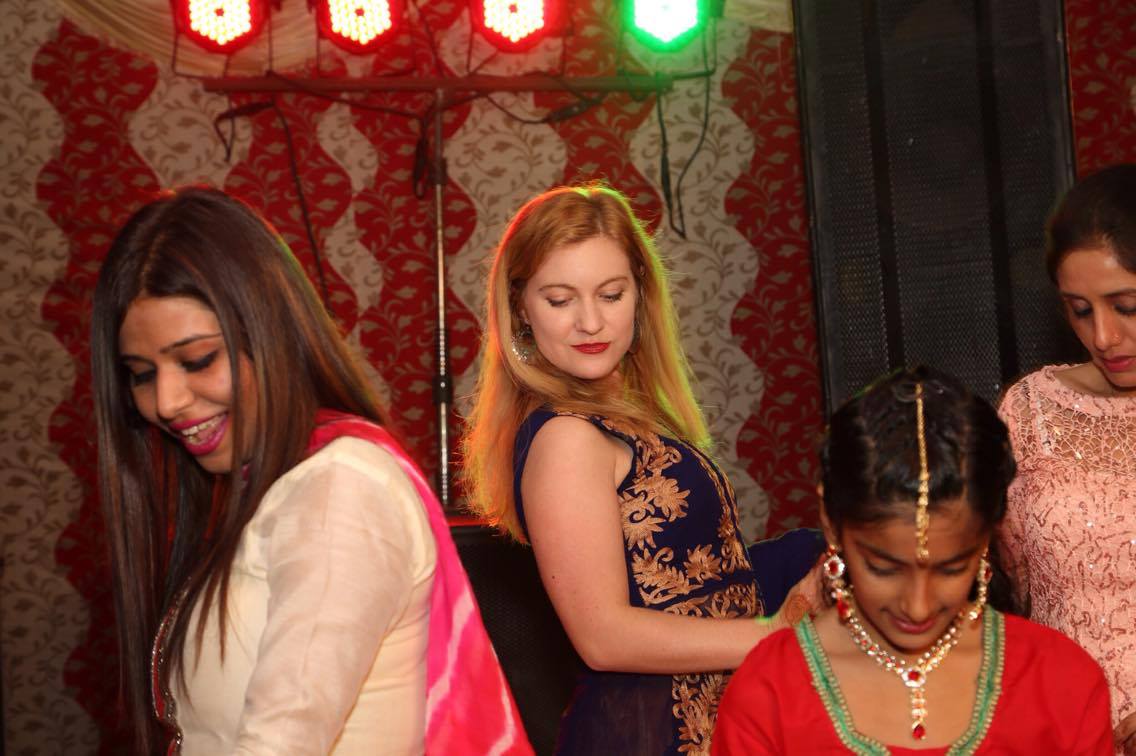
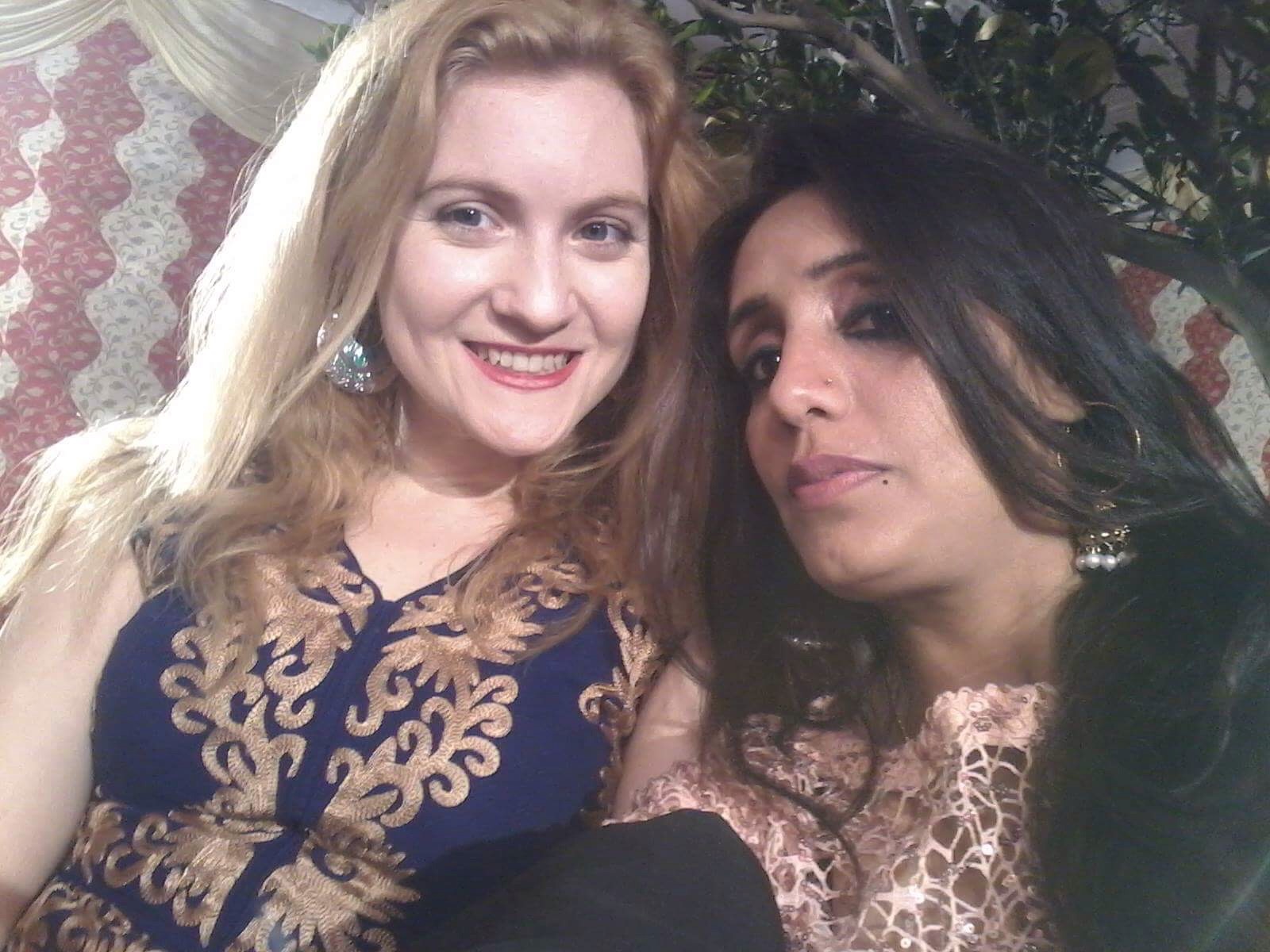
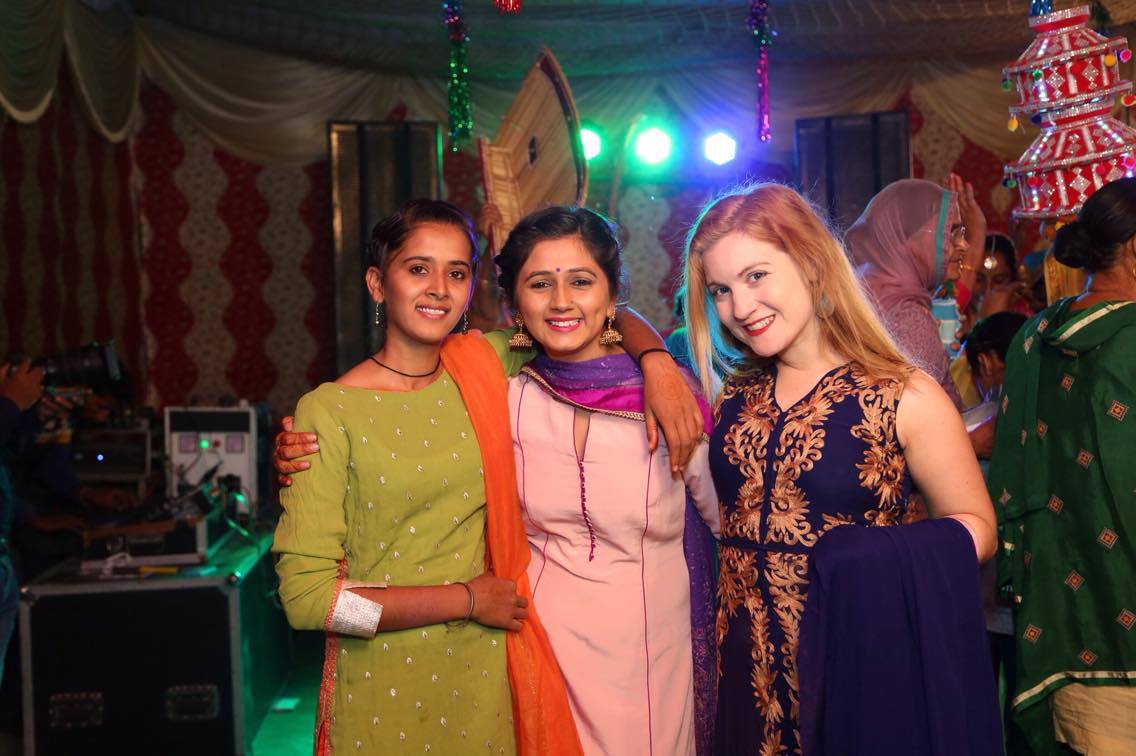
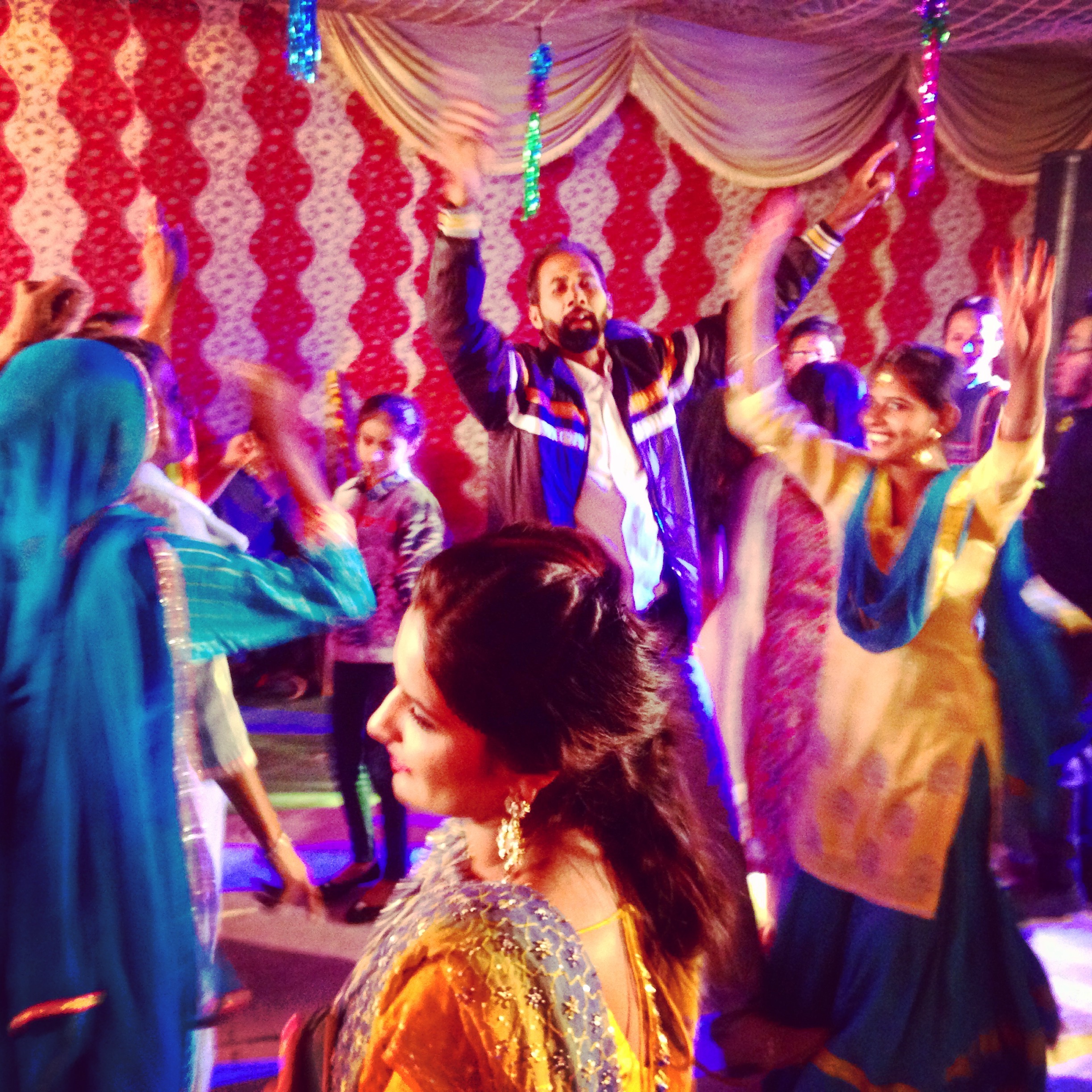
Night: Close to midnight, the family decided to do a tradition (I don’t know the name) in which they cover the bride in turmeric. Turmeric is related to ginger and is usually found as a bright yellow powder. Traditionally, it is used by Indian brides before the wedding to make their skin take on a golden glow. That night we all gathered around Happie on the patio and took turns rubbing a turmeric paste on her face and putting a little oil in her hair. I think this tradition was supposed to be done at 4am before the wedding but I guess since everyone was already at the house, doing it around midnight worked better.
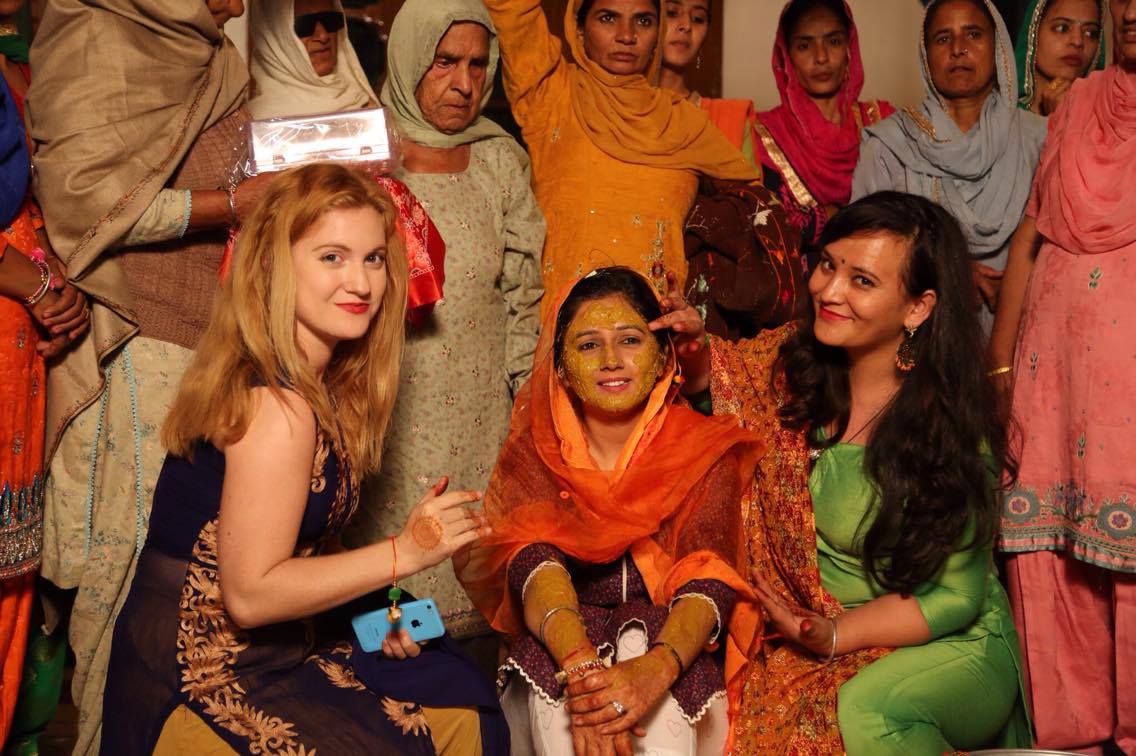
I’ve actually used turmeric paste before. It’s good for psoriasis but stains your skin yellow. Apparently it looks much better on the ‘wheatish’ Indian complexion than on Caucasian skin. While Happie looked beautiful after her turmeric treatment, I never developed the “golden glow”, just an awkward Simpsons’ yellow.
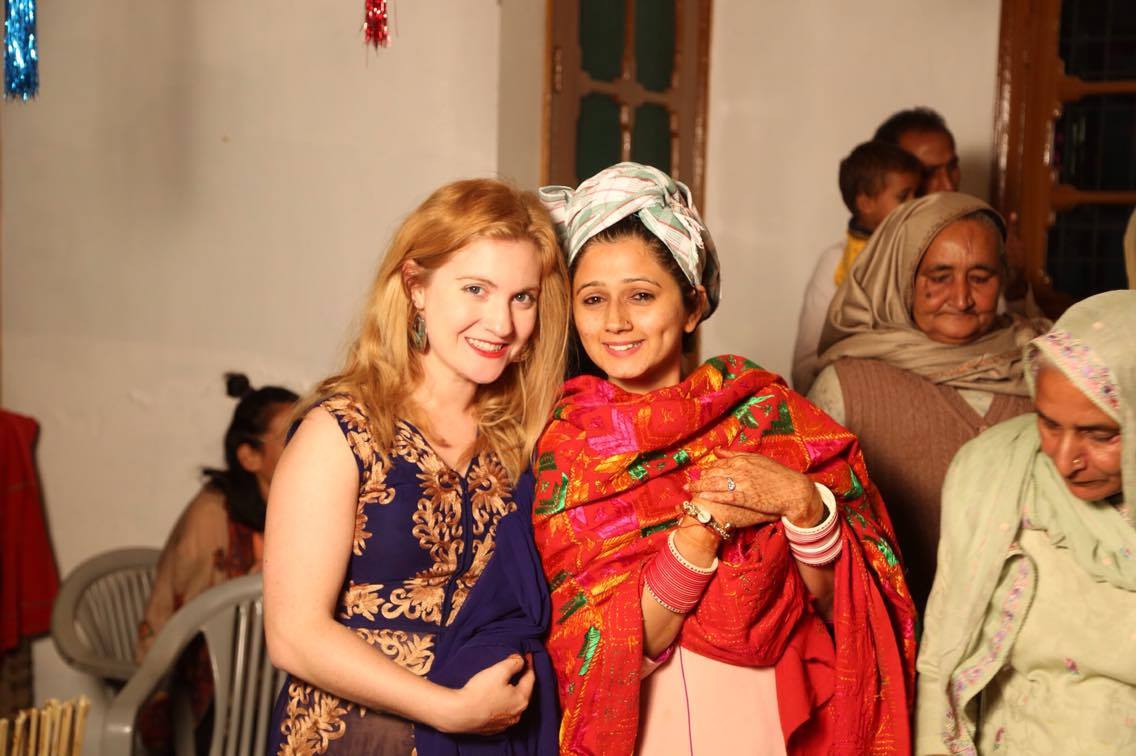
Night continued: It was fun seeing everyone getting ready for bed. Mattresses covered almost every inch of the foyer area for all the male relatives to sleep. I shared a room with Happie’s two friends from college. Everyone just piled into her house and slept there. None of that hotel and privacy nonsense we Americans “need.”
Day 2:
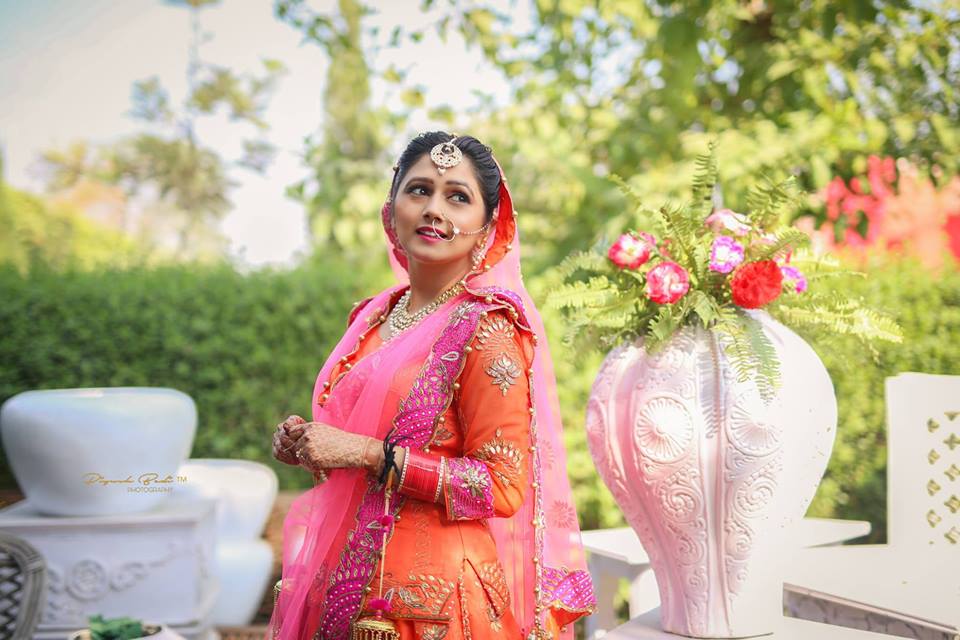
Morning: Breakfast parathas! My favorite part of Punjab. A bit like pancakes, parathas are made from wheat flour and stuffed with vegetables (potato, onion, cauliflower, radish, etc..). They are fried and one eats them with dahi (curd, plain yogurt).
Then I started getting ready. From Happie’s house we drove down the road to a very large event center where Happie was in the middle of a photoshoot looking totally fabulous. Indian brides typically wear bright colors (red most traditionally but I’ve also seen orange, yellow, and pink). Seeing Happie all dolled up, I developed Indian wedding envy again and started rethinking my potential random Punjabi green card marriage ever-so-slightly.
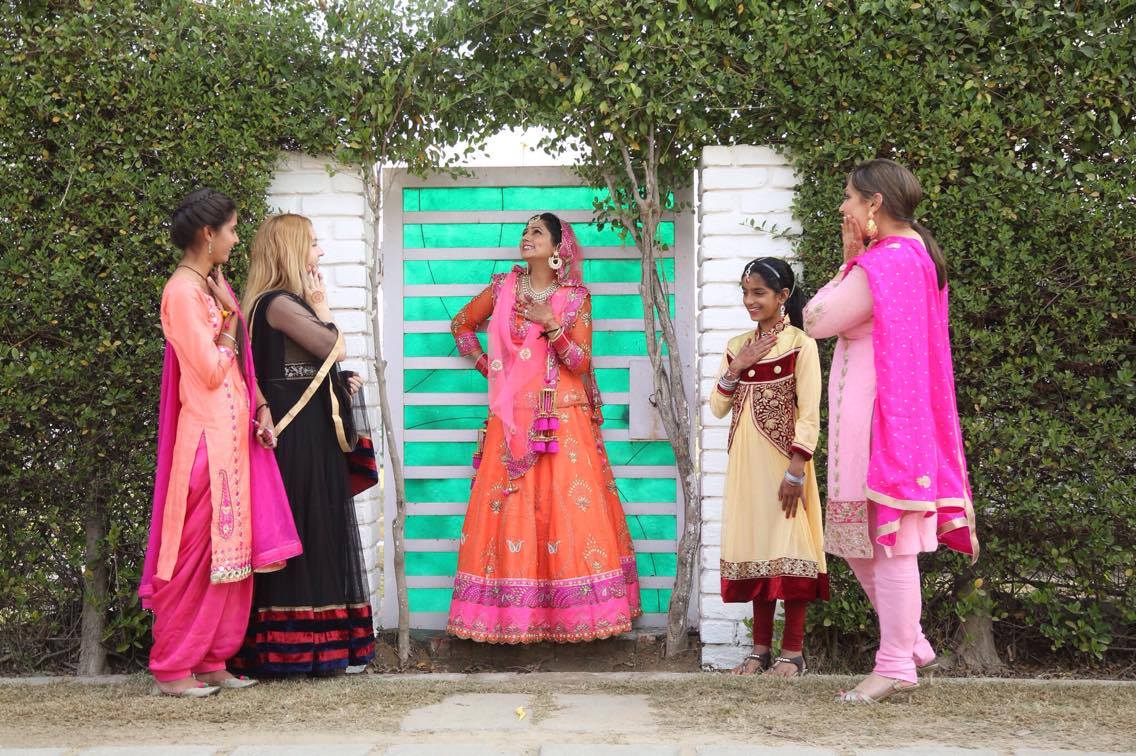
Afternoon: The groom’s family arrived at the event center. The bride’s family had a long ribbon blocking them from entering the premises. The groom bargained with her friends and female cousin. In order to “get to” the bride, he must agree to pay a price to the sister/young female relative. I don’t know how much he agreed to pay. I know they started off with $1,000 but came down to something reasonable pretty quickly.
Then we all drove to the Gurdwara (Sikh place of worship) for the marriage ceremony. Happie’s cousin stayed with me to make sure I didn’t embarrass myself. We left our shoes outside and covered our heads, walked in, knelt before the alter, put some money in the donation box, and moved to the side. I was pretty happy about the “moving to the side” bit because the fancy leggings that came with my dress were much too large. This could be solved by tying them tightly, but with a broken arm, I couldn’t tie them properly. Lest, I spent most of the ceremony worried about keeping my pants on. The cousin came to my rescue after and tied them properly for me in the bathroom.
The religious ceremony was short and sweet, about the same length as a typical Protestant wedding ceremony. Some words were read in Punjabi, and Happie’s finance lead her around the alter with a piece of orange fabric four times.

Late Afternoon:  We returned to the event center. The entire area was decorated with nice chairs, couches, tables, and decorations. There was a stage with music and a large buffet area in the back. I’m guessing around 500 people had attended. Happie and her new husband sat on the stage as the guests lined up to say congratulations and give them money as a present. After a few hours, I went inside with some of her friends were there was another buffet. Happie ate with the groom’s family.
We returned to the event center. The entire area was decorated with nice chairs, couches, tables, and decorations. There was a stage with music and a large buffet area in the back. I’m guessing around 500 people had attended. Happie and her new husband sat on the stage as the guests lined up to say congratulations and give them money as a present. After a few hours, I went inside with some of her friends were there was another buffet. Happie ate with the groom’s family.
Send Off: Even though Happie won’t be moving to Canada for a few more months, the symbolism in Indian weddings (and American weddings) can be a bit overwhelming. Just like how in the US our Dad’s walk down the aisle and “give” their daughters to the grooms, symbolizing a departure from daddy to hubby, Indian weddings do something similar. In Happie’s case, she symbolically left her family and got in a car with the groom’s family and drove off. She gets slightly teary-eyed during this process, understandably. Also during this time, older uncles were again throwing handfuls of money on the couple and on the car. In this case, the hired help even climbed on the car the collect the rupees.

Evening: Happie’s friend, Aman, invited me to her house for the evening. I met her family and she took me into Faridkot to the main Gurdwara.

Overall, it was a really wonderful experience. Unfortunately, there was a bit of a language barrier between me and most of Happie’s family/guests. Despite that, her family went out of their way to involve me and get to know me. I really enjoyed just observing the craziness and excitement in her house. Also, her friends all spoke English and explained some of the traditions as well as just chatted with me casually. In all, it was by far one of my favorite weekends in India.
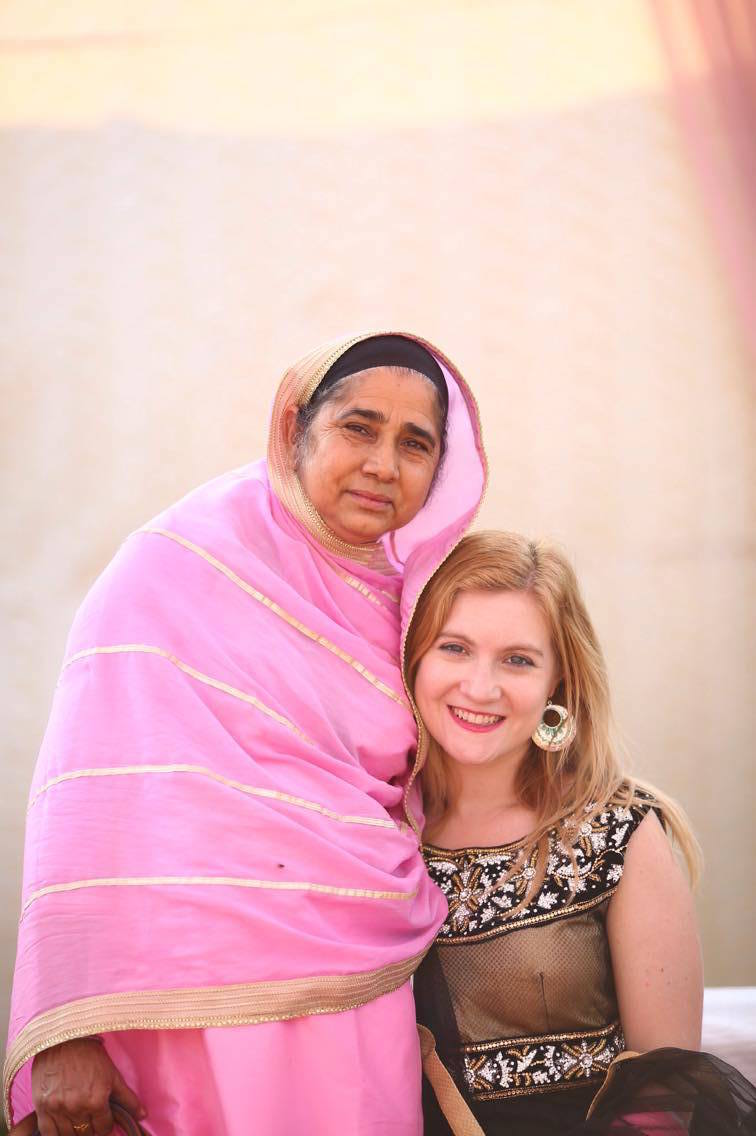
*Professional Photos taken by Piyush Bedi